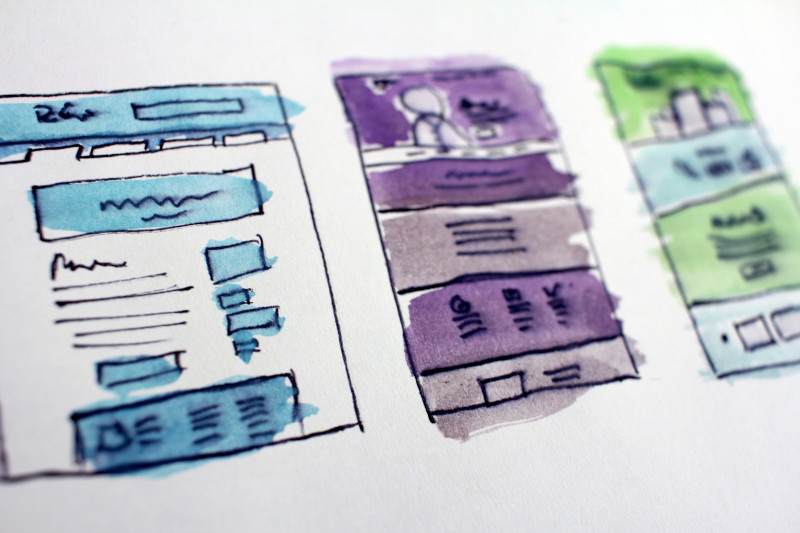This blog is the third in our series on web accessibility from the small business perspective. Previously, we’ve talked about the consequences of ignoring web accessibility and why web accessibility is extra challenging for small businesses.
We don’t pretend we can solve the issue of small business web accessibility with a single blog post. But we do have a few ideas.
1. Read W3C’s web accessibility standards
An hour spent reading about web accessibility is a worthy investment and doesn’t cost much. Check out W3C’s web accessibility standards guidelines, and especially Web Content Accessibility Guidelines (WCAG 2.0) and WAI-ARIA, for Accessible Rich Internet Applications.
When you see the importance of accessibility and know what’s involved, you’ll be equipped to make a plan for your business. And once you know better, do better.
2. Familiarize yourself with local accessibility laws
Accessibility laws you might want to get across include:
- America: ADA compliance
- Europe: European Accessibility Act
- Australia: Disability Discrimination Act 1992
If you have a lawyer, talk to them about making sure you’re compliant with local laws.
3. Use web accessibility checkers
You can use a range of web accessibility checkers to help make sure your content ticks all the boxes. Popular options include:
- TinyMCE’s built-in web accessibility checker
- WAVE Web Accessibility Evaluation Tool
- Web Accessibility by Level Access
Using a web accessibility tool is smart, especially for busy small business owners, developers, and content creators. You probably don’t have time to figure out all the different aspects of accessibility on your own, so let the right expert tools do it for you.
4. Add and improve image alt text
Very few websites follow image alt text best practices for accessibility. By changing your practices for new content as it’s added, and gradually updating your existing images with appropriate alt text, you can make a big difference for users who rely on screen readers. Check out our blog on how to write alt text for best practices and tips.
5. Use headers and make sure they’re in a logical order

Headers are a great way to structure your content and make it easy for your users to scan. Website visitors using screen readers can use your header markup to scan a page and skip ahead if they want to, rather than sifting through a wall of text that may not be relevant.
6. Add captions to videos and transcribe audio
Use a transcription service to transcribe important audio (like podcast episodes) and make that content available in written format for users with hearing loss or deafness. This could have added benefits for SEO, too.
And don’t forget to add caption tracks to your videos. It’s important to ensure your videos are accessible to users who can’t hear them, plus many audience members will prefer to watch videos without audio.
7. Use appropriate contrast and colors
Choosing the right colors and contrasts is important for all users, but especially those with vision impairments and color-blindness.
8. Demand better tools
The companies behind many small business tools have more resources to implement website accessibility practices (compared to their average customer). If small businesses demand accessibility compliance from their website builders, apps, and tools, these companies will be forced to change (or risk losing business).
The best part? Updating a tool or platform to provide better accessibility will positively impact hundreds or thousands of businesses worldwide (and their customers).
9. Work with accessibility-aware contractors
Many small businesses outsource their web development, content creation, and digital marketing to agencies and freelancers. Ask your contractors and service providers what they are doing to make your website and content accessible. If you’ve taken steps to educate yourself, you’ll know what to look for.
If they mention things like image alt text, headers, and WCAG 2.0, it’s a good sign. If they’re not sure, share this article with them and ask them to implement accessibility best practices for your website and content moving forward.
Start improving your web accessibility today

If you feel overwhelmed by web accessibility, that’s normal. But remember: you don’t have to do everything at once.
As I heard on a recent A11y Camp, the answer to accessibility overwhelm is to do your best.
Do the best you can until you know better. Then when you know better, do better.
As a small business, you may not have the resources to overhaul your entire website. But you can find a few minutes here and there to improve your existing content. And when you work with content creators, web developers, and other members of your team, ask the right questions and share resources to make sure they’re across web accessibility best practices.
Small steps add up to make a big difference for your users, while minimizing the risk of legal issues down the track.
Plus, there’s also a clear business case for web accessibility. If you’re a leader in website accessibility best practices, your business could reach a whole segment of the market that’s still (unfortunately) quite underserved.
Get built-in accessibility features with TinyMCE
Tiny has helped countless businesses improve accessibility for both the users who create content and the website visitors who consume it.
TinyMCE’s WYSIWYG HTML editor helps you keep on top of content accessibility, while ensuring content creators can stay focused on writing and publishing new content. And it’s super simple to integrate into your new or existing systems and workflows.
You’re always welcome to contact us to talk about your business’s web accessibility and content needs.
Never stop learning about accessibility
While the principles of web accessibility aren’t likely to change any time soon, the technology and solutions will. So be sure to keep up to date on web accessibility practices by following industry leaders and watching for any updates to web accessibility guidelines.
On that note, if you haven’t already, you might want to check out our previous articles on accessibility:
- Consequences of ignoring web accessibility
- Why web accessibility is extra challenging for small businesses
- How to write alt text for better accessibility
- Top 12 tips to make your website accessible
- Takeaways from attending a11y camp
- Accessibility best practices for learning management systems
- Make your content accessible with TinyMCE
We’ve got more content around accessibility planned, so if you’d like to keep learning, make sure you follow us on Twitter.
